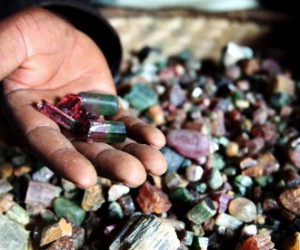With South Africa confirmed as a key partner, the Democratic Republic of Congo (DRC) has announced October 2015 as the launch date for construction of the first phase of what could eventually be the largest hydroelectric plant in the world – critical to optimal mining.
Once all the phases are complete, the Grand Inga project on the Congo River is expected to generate a massive 40 000 megawatts of electricity, bringing renewable power to half of the African continent.
The initialling of a historic energy co-operation treaty between the DRC and South Africa in Lubumbashi in March was a key milestone in the process of bringing the project (first conceived in the early 1970s) closer to fruition.
At a meeting in Paris on the weekend, organised by the DRC government and with a high-level South African delegation in attendance, a range of stakeholders consulted on the implementation of the first phase of the project, Inga 3, which is expected to cost in the region of US$12 billion and produce almost 4 800MW of electricity.
Two existing dams, Inga 1 and 2, have been in operation since 1972 and 1982 respectively, together generating nearly 1 800MW.
In terms of the March treaty, South Africa "expects to purchase a significant share of the electricity production of the new dam, thus confirming itself as a key partner," the DRC government said in a statement on Saturday. "As such, the Republic of South Africa will take 2 500MW of the 4 800MW of future power production of Inga 3, thereby becoming the principal purchaser."
Garrith Bezuidenhoudt, chief of staff in South Africa's Department of Energy, said in the statement that the South African government had "affirmed our commitment to the project by already provisioning for this purchase in our budgetary plan".
Inga 3 is expected to fill the power gap in the DRC, with its fast-growing population and expanding industries, and to help meet burgeoning demand in South Africa.
Subsequent phases, adding up to an eventual total capacity of 40 000MW, will allow countries in southern Africa, northeast Africa and parts of West Africa to benefit from production at the site.
"Grand Inga will thus provide more than half of the continent with renewable energy at a low price," Bruno Kalala, the DRC's minister of water resources and electricity, told Saturday's meeting.
He added, however, that issues around transport and connectivity had yet to be addressed. "Inga is a factor for integration, at both a regional and international level."
According to the DRC government, three consortia are competing to develop the project: Sinohydro and Three Gorges Corporation from China, the operator of China's Three Gorges Dam, currently the world's largest; Actividades de Construccion y Servicios, Eurofinsa and AEE from Spain; and the Daewoo-Posco-SNC Lavalin consortium from Korea and Canada.
The African Development Bank (AfDB), which has been involved in the project since 2009, is financing the base studies and consultants, and has been joined by the World Bank, the French Development Agency, the European Investment Bank and the Development Bank of Southern Africa.
"The question of financing is a major issue in the selection process," said Hela Cheikhrouhou, director for energy environment and climate change at the AfDB. "It is the public-private partnership financing solutions that will be vital for the success of the project."






